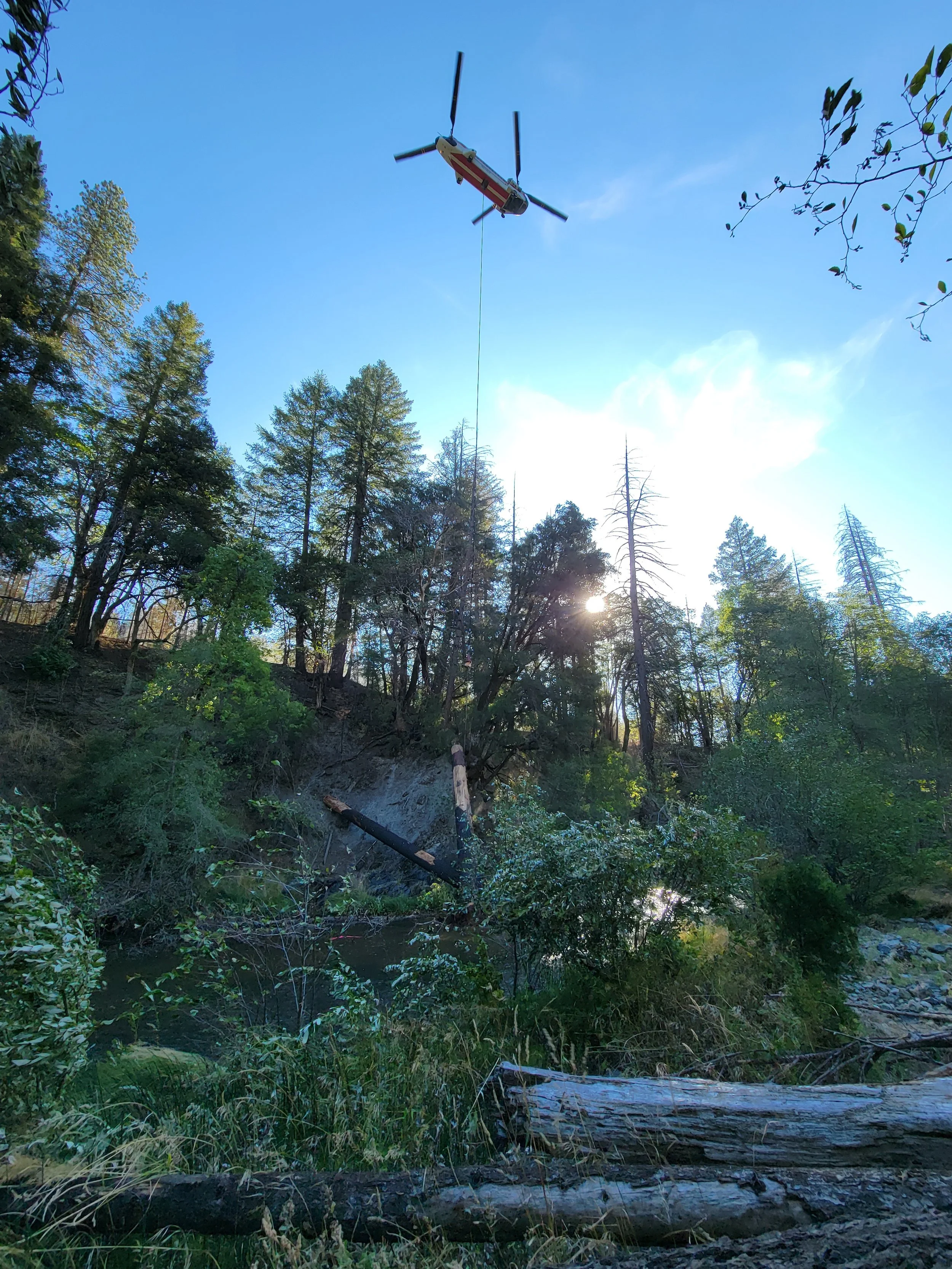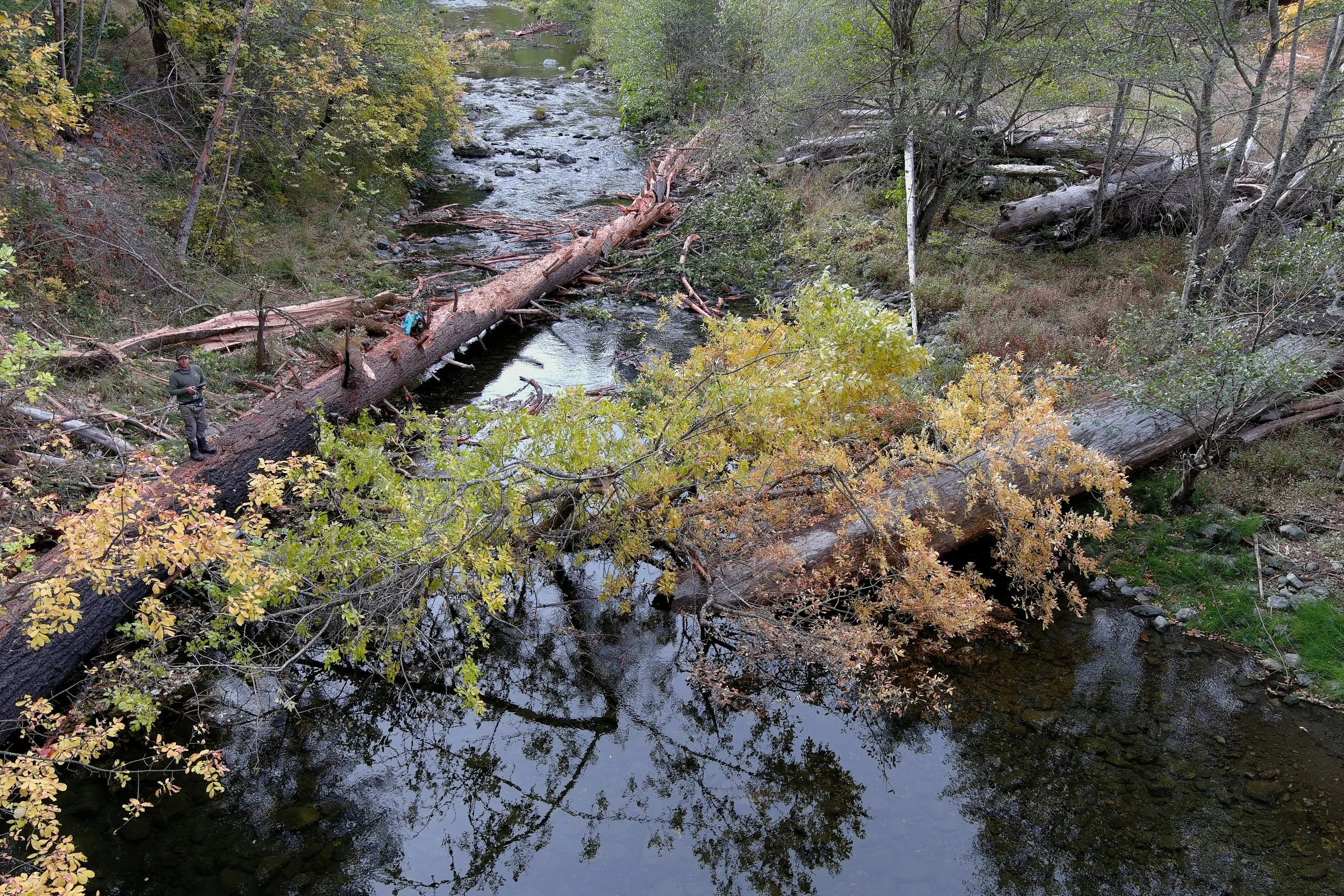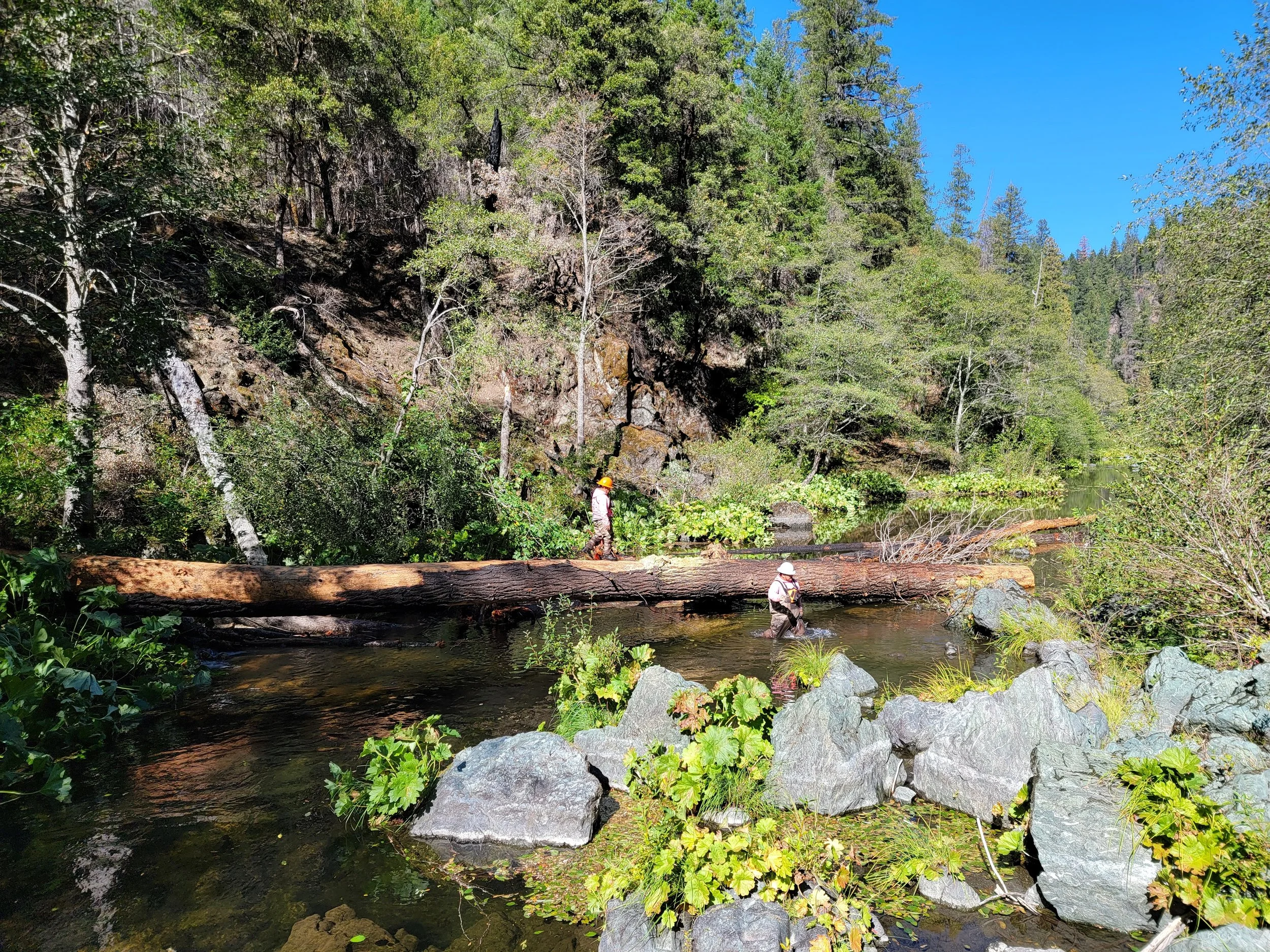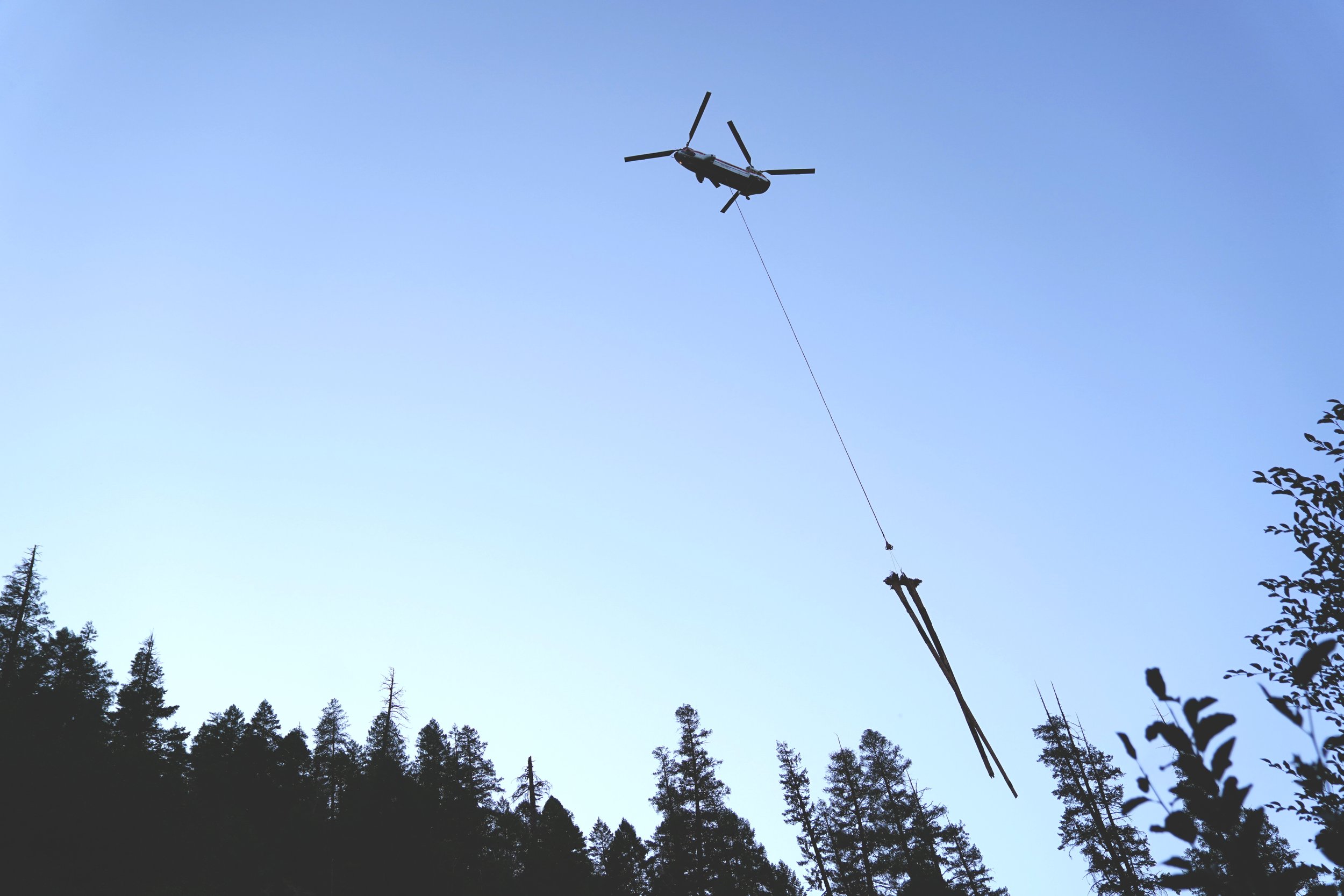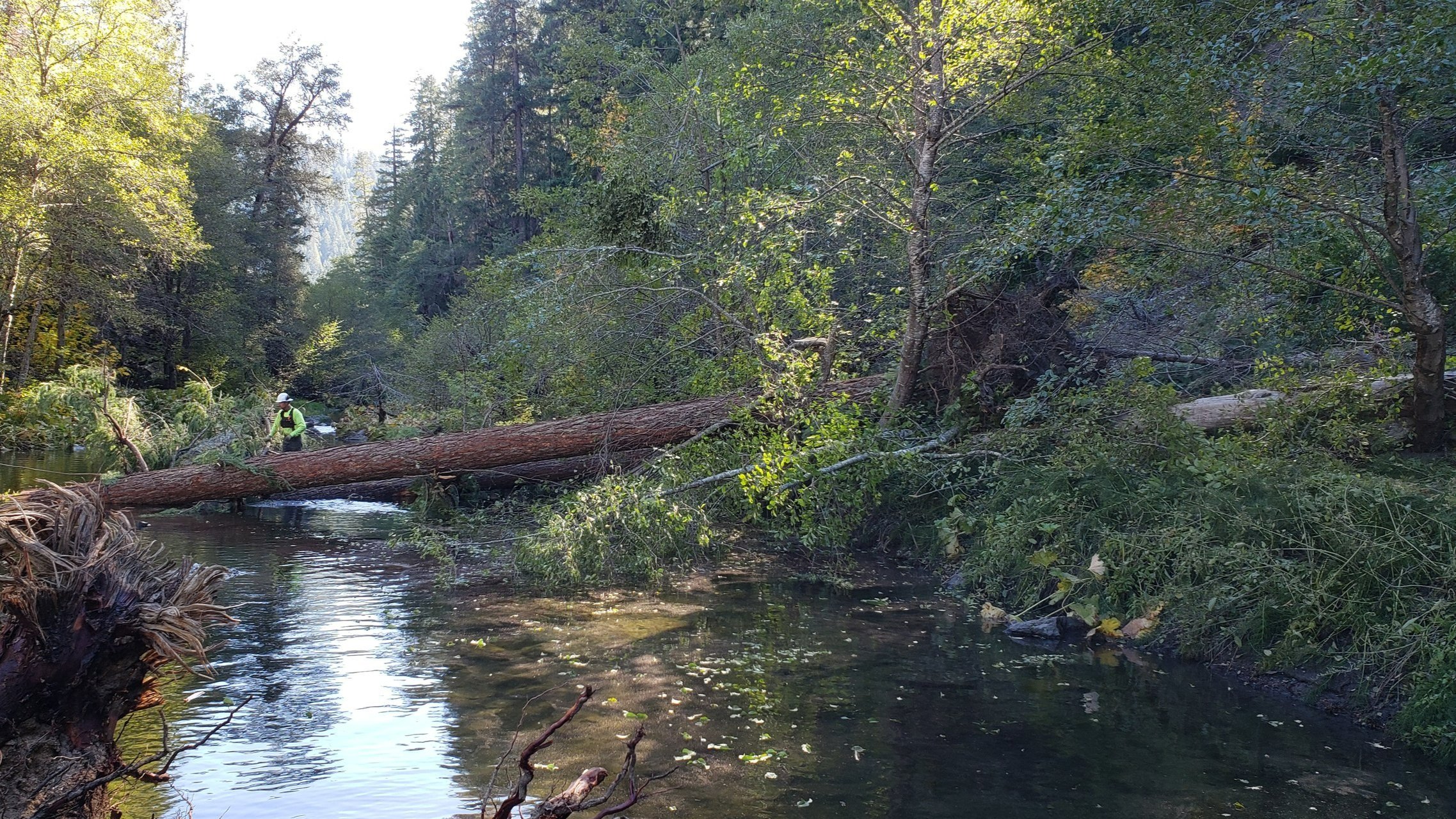
Fisheries Restoration
Save our Spring Chinook
Trinity County could make or break their survival as our salmon battle:
Drought
Over-pumped and dry creeks
Sediment from bulldozed roads
Overabundance of foreign nutrients in the river
The South Fork Trinity River is the southernmost habitat for the Klamath-Trinity ESU Spring Chinook. Unfortunately, our local Spring Chinook salmon population has been declining and are at risk of local extinction.
The Watershed Center helps restore aquatic habitats and boost fish populations through:
Annual snorkel and redd surveys to obtain accurate population counts
Water storage and forbearance tank array installations
Instream habitat restoration in South Fork Trinity River
Snorkel Surveys
Snorkel surveys are conducted in Hayfork Creek, South Fork Trinity River, Canyon Creek, North Fork Trinity River, and New River every summer, in late July or early August. Participating staff join us from the Trinity County Resource Conservation District, California Department of Fish and Wildlife, and the Shasta-Trinity National Forest. Redd (salmon egg nest) surveys are conducted in South Fork Trinity River every autumn, usually in late October or early November. These observations inform our adaptive management strategies.
Water Storage & Forbearance
Save Water, Save Fish
As hydrologic cycles intensify, we’ll need to “store water while the weather’s wet!” The Watershed Center has installed 13 domestic water storage tank arrays, putting 482,500 gallons of water back into Browns Creek.
By capturing water during the winter, landowners can both be a friend to the fish and rest assured they have a reliable water source during the hot, dry summer months.
“Our family is fortunate to be the first property on Tule Creek and in Hayfork Valley to have this program installed. It has been a huge success and a game changer for us, and we are excited to be helping restore our watershed and riparian forest. I can’t thank The Watershed Center and 5C’s enough for making this happen! Thank you, Thank you!
I highly encourage other property owners on the Tule Creek watershed (and elsewhere in the county) to have an open mind and meet with Lesli to learn about this incredible project. I am happy to talk to anyone who may be interested in hearing a perspective from a property owner who has implemented and worked this system for three years. Our stream has not gone dry since installation and I am seeing so many fish now! The riparian forest is going crazy restoring itself to its original grandeur. We also installed the fire standpipe for wildfire resiliency. Some insurance companies take that into consideration when renewing your policy.”
Habitat Restoration
The South Fork Trinity River (SFTR), the largest tributary to the mainstem Trinity River, experienced multiple landslides since the 1960s that filled the channel with large sediment deposits, reducing the depth of pools necessary for spring Chinook to survive the summer. Historical logging has reduced the availability of large wood that would create dynamic aquatic habitat in the channel.
To correct this aquatic habitat deficit, The Watershed Center, Yurok Tribe, U.S. Forest Service, and Trinity County Resource Conservation District have implemented two large wood loading projects in the SFTR with the goal of restoring geomorphic processes and improving salmon habitat.
Phase I (implemented 2018): middle reach of the SFTR, upstream of its confluence with Butter Creek.
Phase II (implemented 2022): within the upper reach of the SFTR, upstream of Forest Glen.
The photo gallery below shows a Chinook helicopter that was contracted to place over 300 Phase I logs and 140 Phase II logs directly into the stream channel. In Phase II, an additional 40 logs were moved into the channel by a cable yarder.
These massive trees—with their root wads still attached—were sourced from nearby burn footprints and strategically positioned in the stream to slow water down, scour out sediment to create deeper pools, and provide refuge for juvenile fish and the food they depend on.
